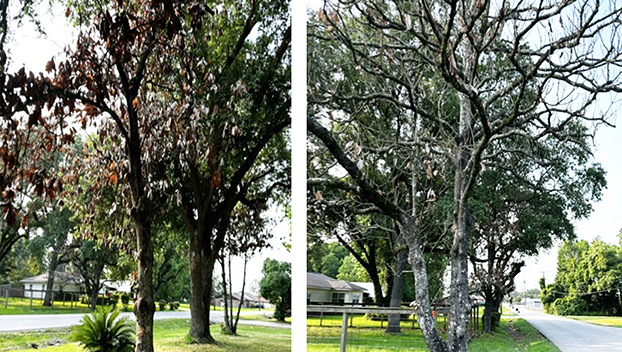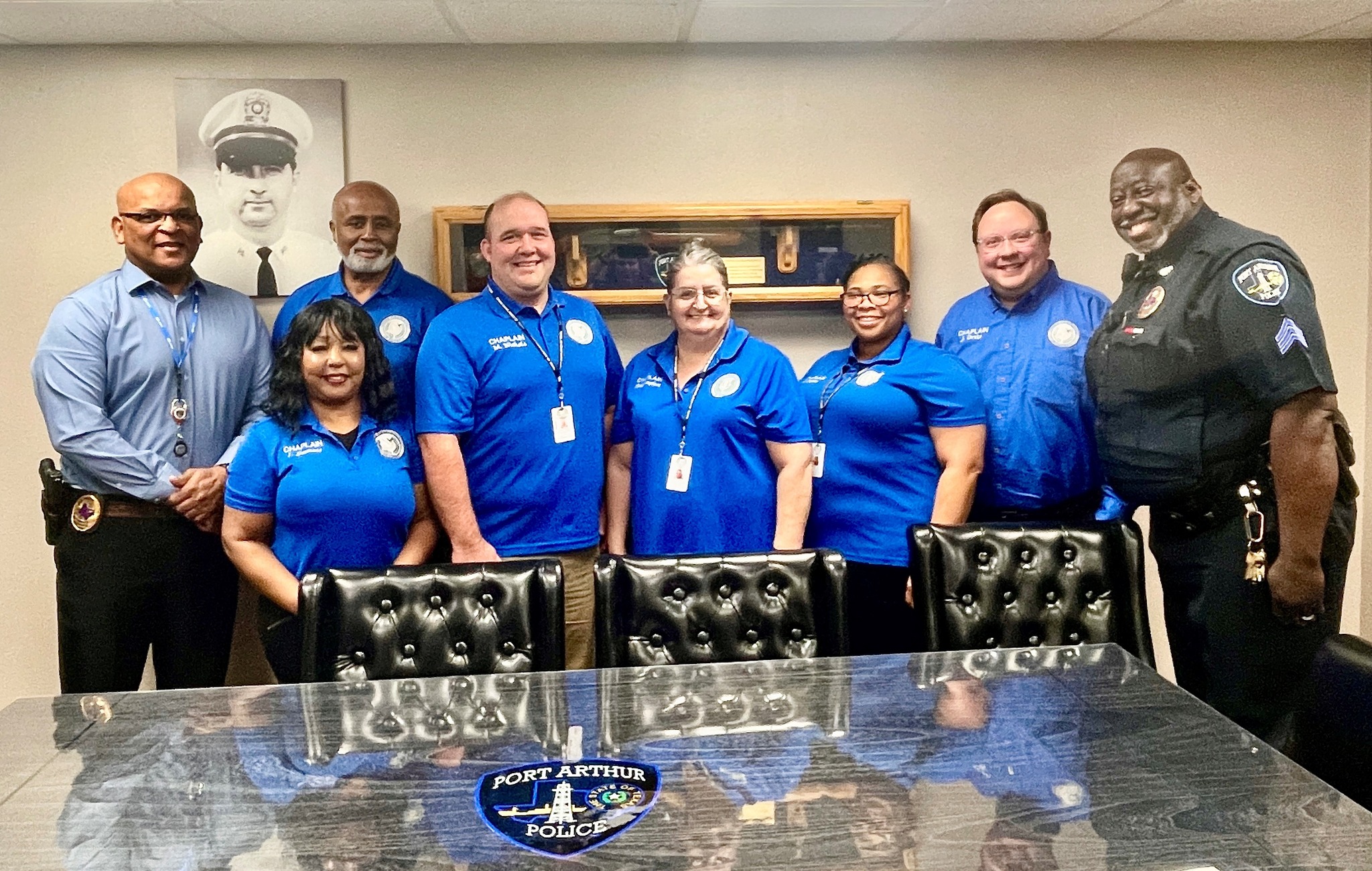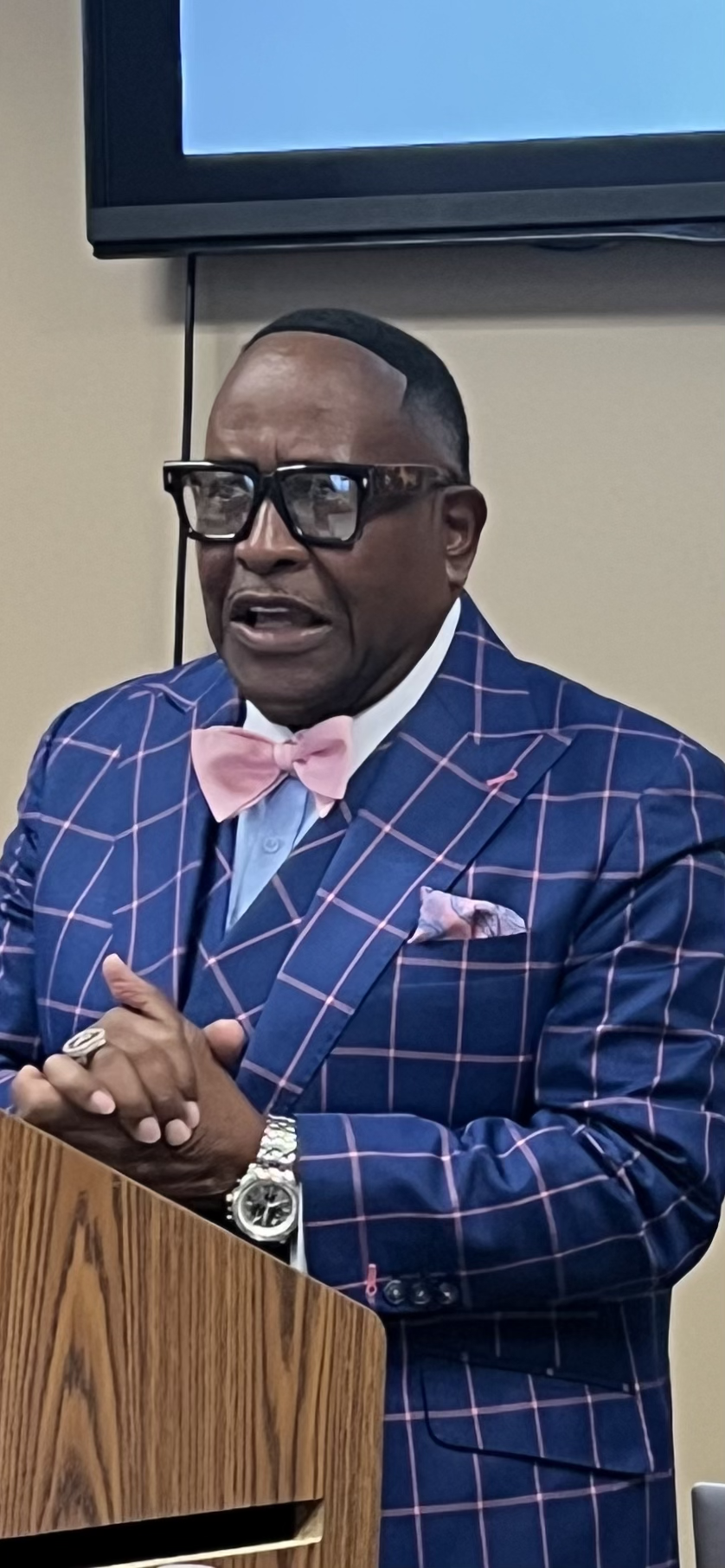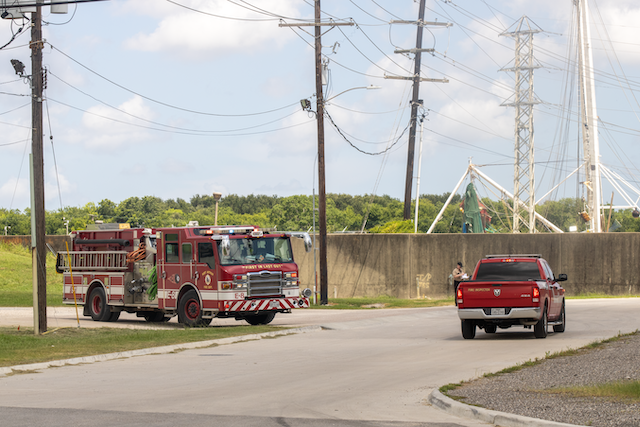CERTIFIED TEXAS EXPERT GARDENER — Under siege with extreme weather impacts in trees
Published 12:04 am Tuesday, May 28, 2024

- Images similar to these can be found in many SETX communities, a reminder to the vast number of trees that have succumbed; evidence of our ever changing environmental conditions. (Courtesy of John Green and Walter Avila)
|
Getting your Trinity Audio player ready...
|
We, as gardeners, need to understand our environment is dynamic with significant seasonal changes none of us have experienced before.
Last year’s drought severely affected our tree population, yet no one knows to what extent of damage was caused. Perhaps some of you are also noticing the extent of our tree losses?
Everywhere I drive, I’m witnessing many trees which have succumbed, noticing others are in various stages of distress, such as having smaller, limited (meager) canopies, losing leaves, or excessive dead or diseased limbs.
Trending
Unfortunately, the three past years of severe weather with extended periods of subfreezing temperatures followed by prolonged droughts have guaranteed trees are now more vulnerable to secondary threats.
Trees are always under attack from insects and diseases. For a healthy tree these ‘vector encounters’ have few lingering effects with the tree showing a slight reaction to the invader.
Prolonged environmental stress will diminish trees’ ability to curtail vector attacks meaning they are more susceptible to tertiary attacks with catastrophic consequences.
According to Ben Plunkett, a Texas A&M Forest Service District Forester, explained “many secondary factors, like insects and fungi, can almost always be found in forests throughout the state, but healthy trees are not as threatened by them and do not indicate an infection.”
He further stated, “We could relate these secondary factors of trees to human bacteria, if we cultured every tissue on our body, we would probably find bacteria, but it will only turn ‘toxic’ under certain conditions. Trees respond similarly in that ‘weakened’ trees will see an increase in reaction to the fungi and insects.”
Trees that have been affected by extreme environmental conditions repeatedly over multiple years require many years or even decades to recover. Our most frequent droughts (2012, 2015, & 2023) continue oppressing trees today.
Trending
Many of our trees are under such severe stress that it takes one additional stress (factor) to force the trees’ mortality!
Weakened hardwood trees are currently threatened by a fungus called ‘hypoxylon canker.’ Symptoms of hypoxylon canker are browning of leaves, and shedding bark, which exposes the gray or black fungus on major limbs. Weakened softwood trees are threatened by two beetles: Ips engraver and cedar bark.
Trees attacked by the Ips engraver beetle (pine trees) demonstrate discolored crowns, diseased/ dying branches with multiple (white to reddish brown) pitch tubes along the bark. Cedar Bark beetles are found in juniper and cypress trees where trees present signs of discoloration (leaves dropping), fewer new limbs (twig/ branch decline), and small ‘exit holes’ on the trunk with ‘saw dust’ near the bored holes.
Some trees that appear to be ‘clinging to life’ are enjoying this season’s abundant rainfall. Trees normally perk up during springs’ wetter conditions, thereby removing a bit of stress from our trees.
Hopefully, spring’s balmy weather will provide them with a respite to build immunity & strength to build resilience! Summer is here (not officially) and every Texas gardener understands the brutality of summer! A friendly suggestion: visually inspect each tree you have and document findings.
Review notes seasonally as an aid when issues arise such as wilted leaves, leaves yellowing, or have begun falling from the tree. Inspect the trees’ trunk for sap leaking from the trunk or discoloration as each characteristic indicates that the tree is severely stressed.
Time for us to shift our focus to aid trees and shrubs, which require our assistance or risk losing many more of them! Our area has repeatedly suffered through uncommon weather patterns; extremes which produce unexpectedly cold winters and intensely hot and dry summers over the past few years!
The stress of each season takes its toll on our trees and places an undue burden on them, without adequate time to repair damage from environmental causes. The effects of these environmental stressors can and will lead to premature mortality, at increased rates unless we provide relief.
Many of our trees have sustained severe injuries in the past few years and many people may not recognize the signs. My suggestion is to scrutinize every tree on your property and assess its condition as healthy or otherwise.
Develop a plan to assist each tree, providing them essentials to survive or remove the tree if severely diseased or if the canopy loss is greater than fifty percent.
Hopefully, drought conditions this year will not continue spreading across the state. Remember it’s not simply grass turning brown, our trees are in peril!
For expert tree advice, gardeners can reach out to the Texas A&M Forest Service, local foresters who can inspect and address specific concerns.
Find your local forester here: https://tfsweb.tamu.edu/contactus/location-search/.
So long for now fellow gardeners, let’s go out and grow ourselves a greener, more sustainable world, one time at a time!
Send Certified Texas Expert Gardener John Green your questions and please continue sending comments to jongreene57@gmail.com.





